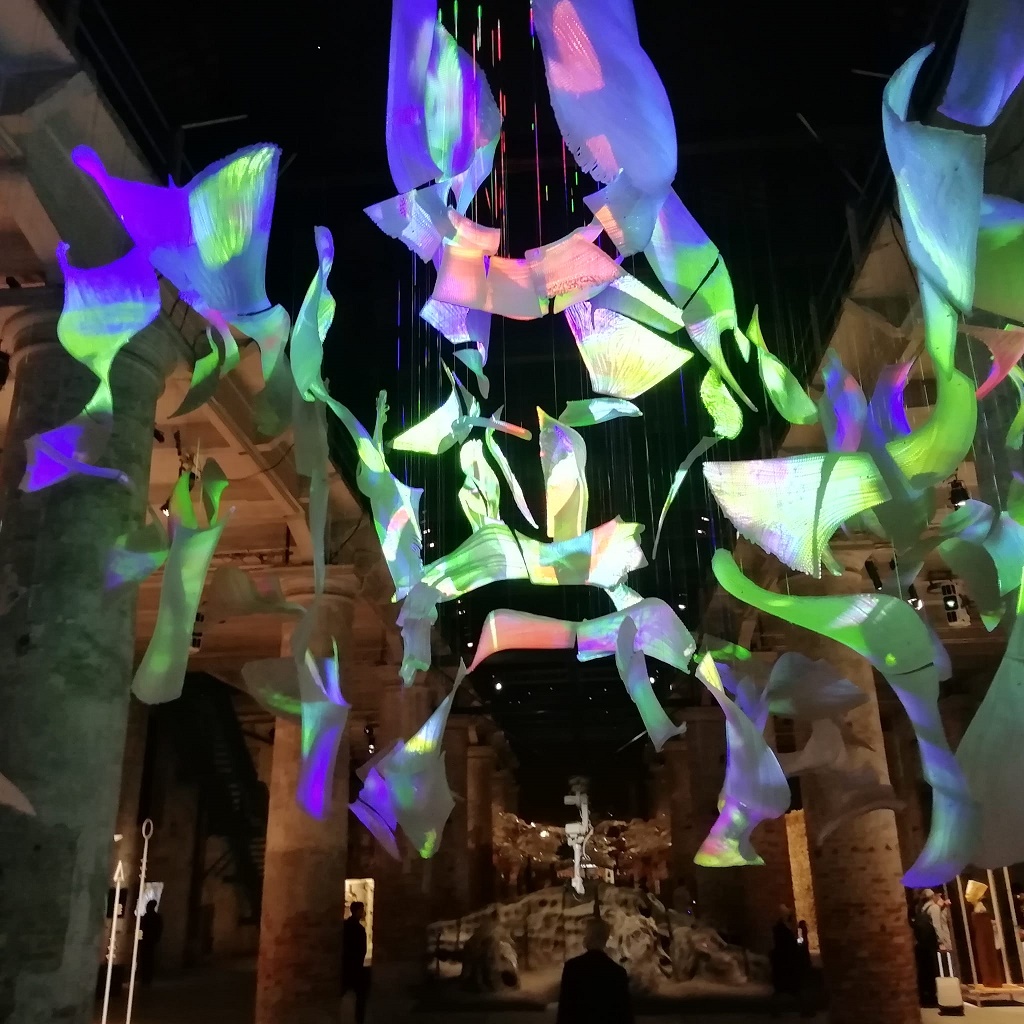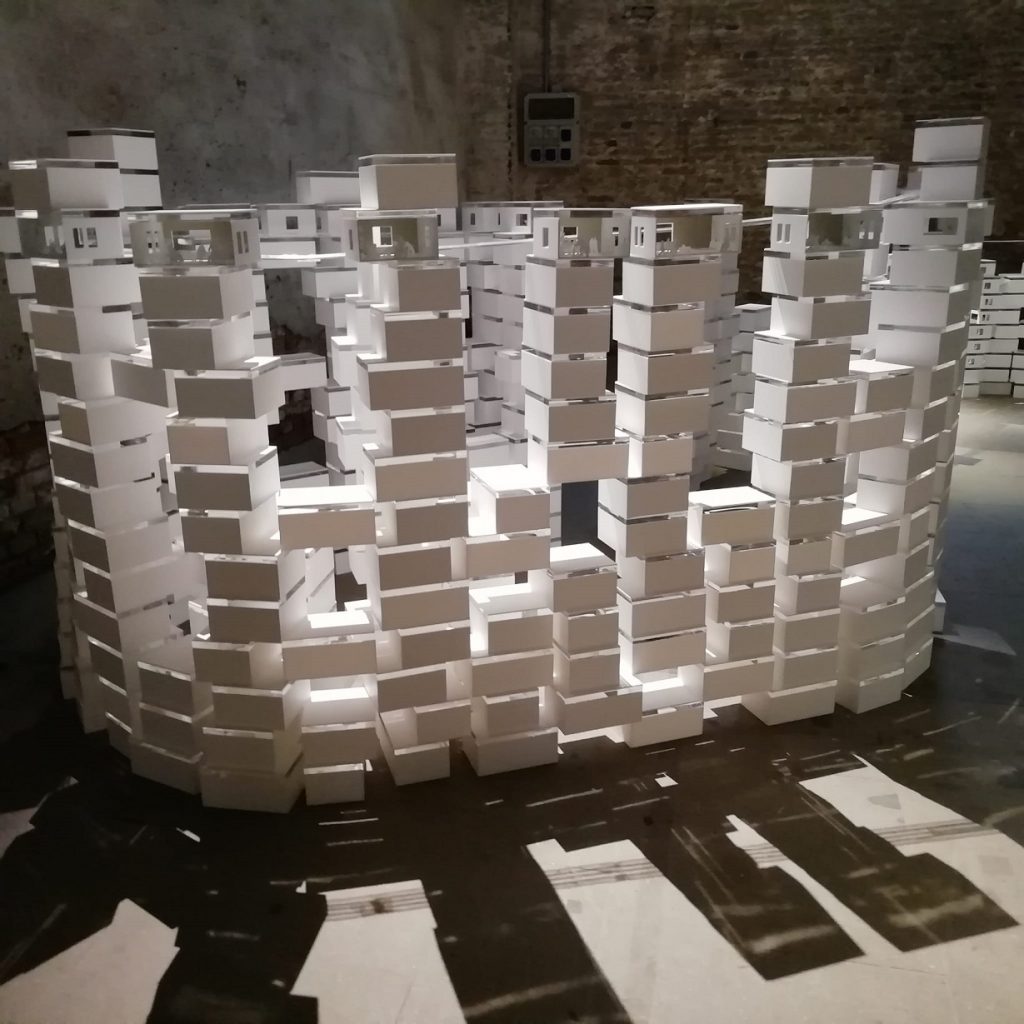How will we live together? (How will we live together?)
This is the big question and the theme of the 17th Architecture Biennale which opened yesterday in Venice at two locations of the Arsenale and Giardini, present the Minister of Culture Dario Franceschini. One of the first major events in attendance, a challenge for Venice and for Italy as it was, last year, the decision to open the Lido Film Festival.

For six months, until next November 21st, Venice is once again the great world capital of architecture and its thought. Not an applied art in and of itself, but rather a discipline that has the ability to put together, using them, all other artistic expressions. But also the increasingly rapid and disruptive developments in technology. “A summary - explains the president of the Biennale Roberto Cicutto - which for me is an art form ". That synthesis of which the curator Hashim Sarkis according to which, today more than ever, the great strength of architecture "is its being understood as an art that brings together the other arts and other areas of expertise". With the architect great manager of complexity at the center.
Eco-sustainability, bio-architecture, energy saving, a new culture of living at the 2021 Architecture Biennale
Here it is, therefore, the 2021 Architecture Biennale, and its proposals that range from the extraterrestrial dimension, with the lunar villages made up of future self-sufficient communities that will have to use the resources already present on the moon to expand the settlement in a sustainable way. Lunar housing designs and models at actual size. Science fiction between evolution and the future. A few more pills than what you are going to see. Examples of open construction and inclusive, without physical but also mental barriers, without walls that delimit and separate, using airy and transparent plastic elements.

Buildings as living organisms, buildings that can activate human space thanks to a design ecosystem that connects flows of people, resources, data and energy. Building plans for collective housing propose solutions to the urgent housing crisis. Projects with reduced environmental impact, small green areas as tools for improve the quality of life and social cohesion. The social function of architecture in the design of refugee camps. Eco-sustainability, bio-architecture, energy saving, a new culture of living represent (and are confirmed) the new frontiers of the near future architecture.
The Italian Pavilion between sustainability, urban resilience and multidisciplinary innovation
Al Italian Pavilion, curated by the architect Alessandro Melis, the great protagonists are the themes of urban resilience (so important precisely for Venice) and those of multidisciplinary innovation, including architecture, botany, agronomy, biology, art and medicine. For the climate changes, the panels of the Italian Pavilion speak to us through images-testimony of the great Vaia storm that devastated some mountain areas of the Veneto. But it is not just a testimony but a work in progress. A research pavilion-laboratory for a shared reflection on the criticality of the questions posed by architecture, and on the many possible answers. In summary: is it possible today to think of an architecture that in some way, in the future, does not force us to pay a price for what has been built? An issue that is as topical as ever even in times of pandemics. If you think, as the curators of the project explained, that "According to the World Health Organization, climate change will be the leading cause of disease within the next thirty years".

For this reason too, the architectures of tomorrow must be based on an essential link between ecology and health. And it is precisely from nature - it is one of the main messages of this Biennale - that we must learn. To understand that everything is connected. And that the proposed theme, How will we live togheter ?, does not concern only the human community but everything around it. How will we live together? Not only men together with men, but men together with the environment, nature, climate, water, air, animals, plants ... A global message of shared community, in a dynamic spirit of continuous research. With an optimistic and positive outlook towards the future: “I have no doubts that we will be able to live together”, says the architect and curator of this Biennale Hashim Sarkis.
One of the qualities of this Biennale was precisely the choice to do it: so did Minister Dario Franceschini
As there have been no doubts, after the forced closure of last year, to open this year. “One of the main qualities of this Biennale was the choice to do it”, so the Minister of Culture Dario Franceschini. And despite some (few) closed pavilions in the Giardini area, although some pavilions have chosen to "fill" their spaces only by activating a QR code that opens virtual images, the 2021 Architecture Biennale is there, with charm and spectacularity of its forms (in some cases very imaginative) and of its suggestions. Particularly this year. Participants are 112 from 46 countries. From the Giardini to the Arsenale up to the collateral events set up in significant areas of the historic city of Venice and in the site, not far from Mestre, of Marghera Fort.




